
Parkour is an athletic training discipline or sport in which practitioners attempt to get from one point to another in the fastest and most efficient way possible, without assisting equipment and often while performing feats of acrobatics. With roots in military obstacle course training and martial arts, parkour includes flipping, running, climbing, swinging, vaulting, jumping, plyometrics, rolling, and quadrupedal movement—whatever is suitable for a given situation. Parkour is an activity that can be practiced alone or with others, and is usually carried out in urban spaces, though it can be done anywhere. It involves seeing one's environment in a new way, and envisioning the potential for navigating it by movement around, across, through, over and under its features.

A street game or street sport is a sport or game that is played on city streets rather than a prepared field. Street games are usually simply play time activities for children in the most convenient venue. Some street games have risen to the level of organized tournaments, such as stickball.
Sébastien Foucan is a French freerunner.

David Nicolas Williams Belle is a French actor, film choreographer and stunt coordinator. He is deemed the founder and leading pioneer of the physical discipline parkour, coining it based on his training and the teachings from his father Raymond Belle.

Yamakasi – Les Samouraïs des temps modernes is a 2001 French film featuring the Yamakasi. The 2004 film Les fils du vent is a semi-sequel playing in Bangkok.
Jump Britain is a 2005 documentary about freerunning. Directed by Mike Christie and produced by Carbon Media, it is a sequel to Channel 4's Jump London. Two of the three freerunners from Jump London, Sébastien Foucan and Jérôme Ben Aoues, appear alongside the members of Urban freeflow, as they interact with landmarks all over Britain. Also, various members of Urban Freeflow go on a 'pilgrimage' to Lisses, France and visit Dame Du Lac there.
Jump London is a documentary first broadcast by Channel 4 about parkour and free running in September 2003, directed by Mike Christie and produced by Optomen Television. It later spawned a sequel, Jump Britain that first aired in January 2005. Both feature documentaries were directed by Mike Christie.

Georges Hébert was a pioneering physical educator in the French military who developed a system of physical education and training known as "la méthode naturelle" and a more wide training program known as Hebertism. Hébert combined the training of a variety of physical capacities with the training of courage and ethics.
Jérôme Ben Aoues has been practising parkour since he met Sébastien Foucan, almost immediately after the creation of the popular movement art parkour. He has starred in 4 movies/documentaries, Yamakasi - Les samouraï des temps modernes, Jump London, Jump Britain and The Making of Jump Britain.
An obstacle course is a series of challenging physical obstacles an individual, team or animal must navigate, usually while being timed. Obstacle courses can include running, climbing, jumping, crawling, swimming, and balancing elements with the aim of testing speed, endurance and agility. Sometimes a course involves mental tests. The idea has been adapted into TV shows and video games.
The Yamakasi are the original group of l'art du deplacement (parkour) practitioners from Lisses, France.
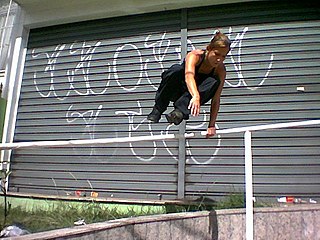
In various urban activities, a vault is any type of movement that involves overcoming an obstacle by some combination of jumping, climbing or diving. Although parkour doesn't involve the idea of set movements, practitioners use similar ways of moving to pass quickly and efficiently over obstacles.
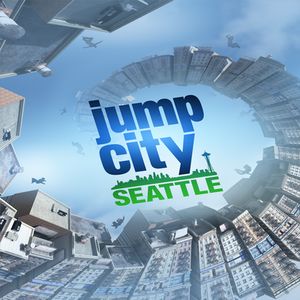
Jump City: Seattle is an American television series that aired on G4 from February 15 to April 5, 2011. It featured four of the top freerunning and parkour teams in the United States participating in a parkour competition. Each week, the athletes competed in different parkour challenges spread out across the streets of Seattle. The series ran for eight episodes and was not renewed for a second season. Team Tempest, led by Levi Meeuwenberg and Brian Orosco of American Ninja Warrior fame, won the competition.
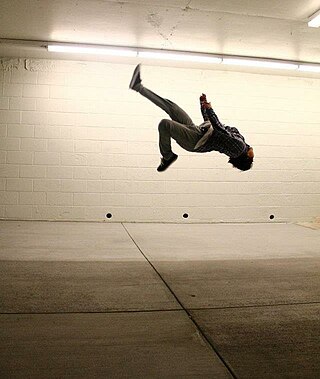
Tricking is a training discipline that combines kicks with flips and twists from martial arts and gymnastics as well as many dance moves and styles from dance. It is a martial art that borrows techniques from taekwondo, karate, wushu, capoeira, and more. It aims to achieve an aesthetic display of different combinations of "tricks". Tricking practitioners are commonly referred to as trickers. Examples of tricking techniques include the 540 kick, the corkscrew (cork), the flashkick, the butterfly twist and the double leg.
Ryan Doyle is a freerunner, martial artist, coach, and actor from Liverpool, England, and is a founding athlete of the World Freerunning and Parkour Federation.
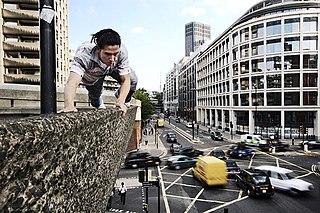
Daniel Marcus Ilabaca is a freerunner and traceur from Moreton, Merseyside, England. He along with Ryan Doyle, are the founders of the World Freerunning and Parkour Federation.
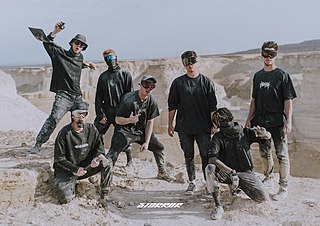
Storror is a group of seven parkour and freerunning athletes from the United Kingdom. They run a YouTube channel. Storror was established in 2010 by brothers Max Cave and Benj Cave, as well as Drew Taylor. They were later joined by Toby Segar, Callum Powell, Sacha Powell, and Josh Burnett-Blake. Storror have made the documentaries SuperTramps: Thailand (2015) and Roof Culture Asia (2017). They made their feature film debut in Netflix's 6 Underground (2019).
Mike Christie is a British film and television director and producer who has made films for the BBC, Channel 4, Sky, Discovery, History Channel, Apple, Showtime and Red Bull. His career began in the 1990s working with the artist and filmmaker Derek Jarman – who he met at meetings of Act Up London – on projects including the book At Your Own Risk. Other early collaborators included Pet Shop Boys and Suede with whom he worked from 1992 to 1997. In 1997, he co-created Drop the Debt, the mainstream music and entertainment industries campaign of the Jubilee 2000 movement, fronted by Bono and others, and led to the cancellation of more than $100 billion in debt owed by 35 of the poorest countries.









